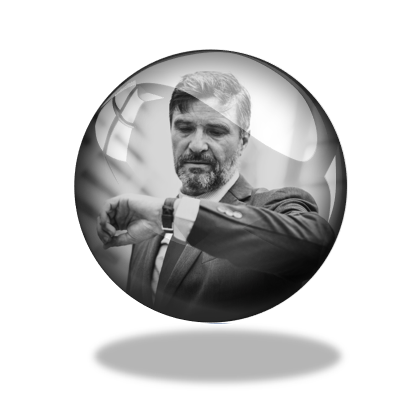What are the key trends facing business today? What are the topics business leaders should focus on?
There have been many analyses done on this in the business press and by the large strategy consultancies. And the results paint an exciting and encouraging picture of how business will evolve. Because, basically, the vast majority of the current and upcoming changes are things to do with ‘releasing humanity’. In other words they are about freeing off people to be fully themselves and equipping them to achieve their potential. Both individually and together, at work and at home.
What are the business trends?
The business trends, common to almost all business, group into 8 areas. Specifically, these are sustainability; purpose centricity; value co-creation; agile partnerships; adaptive organisation; digital empowerment; insight engineering; and human cloud. And all of these trends are potentially good news. Good news for your people (including yourselves), your relationships, and the lives we all can lead.
Let’s explore each one of them in a bit more detail. And with an emphasis on how they might be doing that. Please note, there is no significance to the order in which they are covered. Rather, they are ordered to illustrate the flow between them. Their overall order of importance will depend largely upon your industry and your situation within it.
Trend #1: Sustainability

Sustainability reflects both a global component in terms of our ecological imperatives, and also a local component in terms of our resilience in mastering disruption. The first will continue to broaden people’s understanding for our connectedness. And thereby our responsibility for each other and the fragility of our context. The second will help people to better appreciate their own part in polarised opinions. And thereby help develop new attitudes and vocabulary to reach across perspectives. People’s appreciation of ‘humanity’ will grow. And, as a result, this will stimulate a greater search for meaning and purpose in people’s lives and work.
Related business concepts: ESG; Carbon footprint;
Trend #2: Purpose Centricity

Purpose centricity reflects business’s response to the search for meaning. This trend can be seen in the growth of businesses which see profit as a means to serve, rather than service as a means to profit. And in the shift toward recruits who seek meaningful roles over highly-remunerated ones. The result of this increased focus on ‘why?’ will lead to new value chains. Consequently creating business opportunities which inspire people within the organisation. Inspiring a sense of pride, loyalty and belonging in those who work for it. The fruit of this growth in meaning will be mental wellbeing. As a result of increased creativity, greater autonomy and efficiency, and closer customer relationships.
Related business concepts: Vision; mission; values; B-Corp;
Trend #3: Value Co-creation

Value co-creation reflects the fruit of closer, more empowered customer relationships. The best of which will continue to evolve from the purely contractual and transactional to a shared partnership for customer success. Advances in technology and digitalisation will enable better, more creative, customer engagement. And supplier staff will increasingly become allies in jointly understanding new opportunities for adding value, and in developing solutions that utilise the resources of both parties to best effect. This creates new possibilities for everybody involved.
Related business concepts: Customer success management;
Trend #4: Agile Partnerships
Agile partnerships will be part of this growth in co-creation, as traditional supplier and customer roles continuously adapt and partner to better serve the consumer (or the next step in their supply chain). Success in this endeavour will be fueled by increased authenticity and trust. And even the vulnerability necessary for fast-forming relationships which support the agility required. Furthermore, the shift in working practices will spawn many who step outside employment to lead an entrepreneurial wave of innovative options which will create shifts and new opportunities in supply chain partnerships.
Related business concepts: Partner strategy engagement; outsourcing; core focus;
Trend #5: Adaptive Organisations
Adaptive organisations will be key to maximising the opportunity and benefit from these fast evolving relationships. Flatter, more agile, structures are required to readily present and empower the best of the organisation’s capabilities to meet rapidly emerging opportunities and challenges. And this presents tremendous opportunity for people to grow unconstrained by traditional hierarchies and role inertia. As people work on the challenges, the challenges work on the people, lifting their potential and accelerating their growth. This enables rapid innovation and change, and releasing people into the best that they might be.
Related business concepts: OD; SAFe; Scrum; Standup; Obeya;
Trend #6: Digital Empowerment

Digital Empowerment is a key part of innovation and change. In essence it is about optimising the fast-evolving relationship between human and machine intelligences. Developing each for what they do best. Adapting them to better utilise and empower each other’s potential. For the machine, it is about using AI and code to deliver consistency and routine, and to provide new tools and capabilities to people. For the people, it is about being freed from machine-like drudgery to be creative, build relationships, inspire, dream, care, love, bless. And to stretch and configure the machines in pursuit of this.
Related business concepts: Digital transformation; no-code apps;
Trend #7: Insight Engineering
Insight Engineering will be a big part of the emerging human-machine relationship. Firing insight through the provision of the right information at the right time in the right context. Unlike most of what we access currently, this will not be restricted to numerical, factual and historic data. Instead it will balance this with emotional, even spiritual, stimuli connected with past present and future. A source of hope, narrative, imagery, inspiration, belief, identity, belonging – all that helps us recall the complex (even fuzzy) facets which reflect who we are and where our purpose lies.
Related business concepts: CRM; Intranet; knowledge management;
Trend #8: Human Cloud
Human cloud is a term which reflects the changing nature of employment: Increasingly people are no longer constrained by set windows of time or location in their work. At the commodity end, it sadly represents abusive human consumption, even economic slavery. But in the context of the above, it can represent greater freedom of choice to better integrate work into lifestyle, rather than vice versa. For the individual this can be a more empowering, and humanising, employee experience. And for the organisation, it can provide better, more flexible and timely, access to talent, diversity, insight, resources, ideas, perspectives.
Related business concepts: Alumni Groups; Outsource web-markets
Extent of business trends
It is easy to imagine that these business trends will only apply to the most advanced organisations, but this is not true. The next generation have different values and are looking for business to change to reflect these. The business trends listed above will advance to different stages in different industries and situations, but they will occur to some extent in all.
And wherever they occur, they will thrive, and they will raise the competitive game, and the expectations of those involved.
We will either adventure into this exciting new future, or we will fall victim to it.
To explore these topics further, feel free to
contact us. We find our own thinking is continually sharpened and enriched by the questions people ask. And by the discussions that emerge from it.
 The creative passion of your people in working together toward delivering something they believe in
The creative passion of your people in working together toward delivering something they believe in


 Our interviewing approach allows people to feel understood and respected in their current views. But it builds from there in tapping into their imagination to identify what sort of future would inspire them and their commitment.
Our interviewing approach allows people to feel understood and respected in their current views. But it builds from there in tapping into their imagination to identify what sort of future would inspire them and their commitment. In this way, the interview process begins to open up people’s thinking at a very personal level, and to get them to think about possibilities and potential beyond their everyday mindset. And it makes them curious, for how their answers compare with those of their colleagues. And also about what might emerge from the visioning workshop itself.
In this way, the interview process begins to open up people’s thinking at a very personal level, and to get them to think about possibilities and potential beyond their everyday mindset. And it makes them curious, for how their answers compare with those of their colleagues. And also about what might emerge from the visioning workshop itself. Moving from individual positions to embrace and support a collective vision of a common purpose, is a journey. It is a journey in which commitment needs to be built and preserved and reconciled as the collective will emerges and flourishes. And key to achieving that it that the process is both transparent and scrupulously fair.
Moving from individual positions to embrace and support a collective vision of a common purpose, is a journey. It is a journey in which commitment needs to be built and preserved and reconciled as the collective will emerges and flourishes. And key to achieving that it that the process is both transparent and scrupulously fair. Ideally, if we design the workshop perfectly, the process of the workshop will flow naturally and intuitively. It will seem to provide the natural next step at precisely the right moment. And people will not even realise they are following a process. Most of the time, a well designed workshop will feel that way. But there will still be little bumps in the road. And some interventions just need to be tuned and timed to what is happening in the moment. That is where facilitation comes in.
Ideally, if we design the workshop perfectly, the process of the workshop will flow naturally and intuitively. It will seem to provide the natural next step at precisely the right moment. And people will not even realise they are following a process. Most of the time, a well designed workshop will feel that way. But there will still be little bumps in the road. And some interventions just need to be tuned and timed to what is happening in the moment. That is where facilitation comes in. Pursuing an adventurous shared vision is a learning experience. 12 months in, the people who started off on the adventure, are not the same people you now meet. They have grown in ability, confidence and understanding. The perspectives they had 12 months earlier have evolved. New insights, and collaborative experiences have stretched the way that they think and the potential they see around them. And they are coming to discover that what they thought was 70% right was actually only 50% right, but that is okay because they have only had time to cover 30% of the ground.
Pursuing an adventurous shared vision is a learning experience. 12 months in, the people who started off on the adventure, are not the same people you now meet. They have grown in ability, confidence and understanding. The perspectives they had 12 months earlier have evolved. New insights, and collaborative experiences have stretched the way that they think and the potential they see around them. And they are coming to discover that what they thought was 70% right was actually only 50% right, but that is okay because they have only had time to cover 30% of the ground.

 Purpose centricity reflects business’s response to the search for meaning. This trend can be seen in the growth of businesses which see profit as a means to serve, rather than service as a means to profit. And in the shift toward recruits who seek meaningful roles over highly-remunerated ones. The result of this increased focus on ‘why?’ will lead to new value chains. Consequently creating business opportunities which inspire people within the organisation. Inspiring a sense of pride, loyalty and belonging in those who work for it. The fruit of this growth in meaning will be mental wellbeing. As a result of increased creativity, greater autonomy and efficiency, and closer customer relationships.
Purpose centricity reflects business’s response to the search for meaning. This trend can be seen in the growth of businesses which see profit as a means to serve, rather than service as a means to profit. And in the shift toward recruits who seek meaningful roles over highly-remunerated ones. The result of this increased focus on ‘why?’ will lead to new value chains. Consequently creating business opportunities which inspire people within the organisation. Inspiring a sense of pride, loyalty and belonging in those who work for it. The fruit of this growth in meaning will be mental wellbeing. As a result of increased creativity, greater autonomy and efficiency, and closer customer relationships. Value co-creation reflects the fruit of closer, more empowered customer relationships. The best of which will continue to evolve from the purely contractual and transactional to a shared partnership for customer success. Advances in technology and digitalisation will enable better, more creative, customer engagement. And supplier staff will increasingly become allies in jointly understanding new opportunities for adding value, and in developing solutions that utilise the resources of both parties to best effect. This creates new possibilities for everybody involved.
Value co-creation reflects the fruit of closer, more empowered customer relationships. The best of which will continue to evolve from the purely contractual and transactional to a shared partnership for customer success. Advances in technology and digitalisation will enable better, more creative, customer engagement. And supplier staff will increasingly become allies in jointly understanding new opportunities for adding value, and in developing solutions that utilise the resources of both parties to best effect. This creates new possibilities for everybody involved. Digital Empowerment is a key part of innovation and change. In essence it is about optimising the fast-evolving relationship between human and machine intelligences. Developing each for what they do best. Adapting them to better utilise and empower each other’s potential. For the machine, it is about using AI and code to deliver consistency and routine, and to provide new tools and capabilities to people. For the people, it is about being freed from machine-like drudgery to be creative, build relationships, inspire, dream, care, love, bless. And to stretch and configure the machines in pursuit of this.
Digital Empowerment is a key part of innovation and change. In essence it is about optimising the fast-evolving relationship between human and machine intelligences. Developing each for what they do best. Adapting them to better utilise and empower each other’s potential. For the machine, it is about using AI and code to deliver consistency and routine, and to provide new tools and capabilities to people. For the people, it is about being freed from machine-like drudgery to be creative, build relationships, inspire, dream, care, love, bless. And to stretch and configure the machines in pursuit of this.
 by
by  But this situation is far from unusual; we might even have been that CEO rushing through the Airport whilst taking important calls. As we try to cope with the increasing levels of change and complexity that attends our roles, we find that so much more is forced into our calendars, and we are getting less and less time to properly understand and think things through.
But this situation is far from unusual; we might even have been that CEO rushing through the Airport whilst taking important calls. As we try to cope with the increasing levels of change and complexity that attends our roles, we find that so much more is forced into our calendars, and we are getting less and less time to properly understand and think things through. What sort of person will be needed to replace you to cope with 2025? And will their qualities be the ones that will be most effective in lifting the organisation to the next level? Or will they simply be the qualities that enable them to barely survive relentless onslaught of calls for their attention?
What sort of person will be needed to replace you to cope with 2025? And will their qualities be the ones that will be most effective in lifting the organisation to the next level? Or will they simply be the qualities that enable them to barely survive relentless onslaught of calls for their attention? First, we need to call it as it is. We need to be honest about what is happening and its potential implications for us, our people, our organisations, and our values. We need to move beyond the ‘macho’ front that exists, and open up about the downsides of all this. Yes, that requires courage, but we needed courage to get where we are. We have courage. And it is now time to turn it to a different track. To step into the adventure of: What happens if we stand up, and say “This has to stop!”
First, we need to call it as it is. We need to be honest about what is happening and its potential implications for us, our people, our organisations, and our values. We need to move beyond the ‘macho’ front that exists, and open up about the downsides of all this. Yes, that requires courage, but we needed courage to get where we are. We have courage. And it is now time to turn it to a different track. To step into the adventure of: What happens if we stand up, and say “This has to stop!”
 I suspect you have heard the idea that the future is VUCA – a military acronym coined after 9/11 for volatile, uncertain, complex and ambiguous.
I suspect you have heard the idea that the future is VUCA – a military acronym coined after 9/11 for volatile, uncertain, complex and ambiguous.